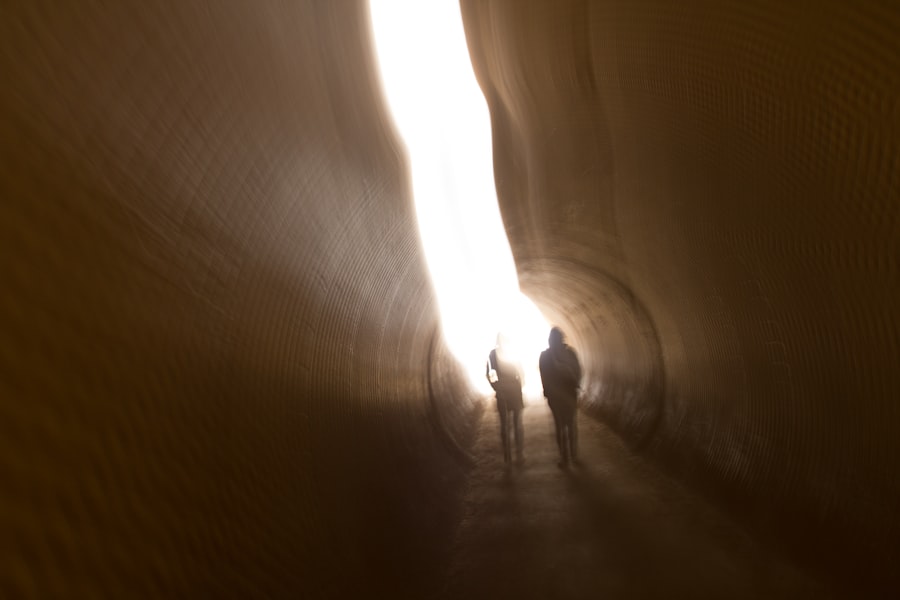The Drake Passage, a body of water that separates South America from Antarctica, is renowned for its tumultuous seas and unpredictable weather. Named after the English explorer Sir Francis Drake, who navigated these waters in the late 16th century, the passage has become a significant route for adventurers and researchers alike. It serves as a gateway to the Antarctic, drawing travelers eager to experience the raw beauty of one of the planet’s last frontiers.
The passage is not merely a geographical feature; it embodies the spirit of exploration and the allure of the unknown. For many, crossing the Drake Passage is a rite of passage, a test of endurance and resilience against nature’s elements. The journey is often described as both exhilarating and daunting, with waves that can reach heights of over 30 feet.
Despite its challenges, the Drake Passage offers unparalleled opportunities for wildlife observation and breathtaking vistas, making it a coveted destination for those seeking adventure. As travelers embark on this journey, they are not just crossing a stretch of water; they are stepping into a world where nature reigns supreme.
Key Takeaways
- The Drake Passage is a body of water between South America’s Cape Horn and the South Shetland Islands of Antarctica, known for its challenging sailing conditions.
- The geography and climate of the Drake Passage are characterized by strong winds, rough seas, and unpredictable weather, making it one of the most treacherous waterways in the world.
- The historical significance of the Drake Passage is marked by the exploits of famous explorers like Sir Francis Drake and the early navigators who braved its waters in search of new trade routes.
- Navigating the Drake Passage presents challenges such as extreme weather, rough seas, and potential sea sickness, requiring careful planning and preparation.
- Tips for preparing for a journey through the Drake Passage include packing appropriate clothing, securing travel insurance, and seeking medical advice for motion sickness.
Understanding the geography and climate of the Drake Passage
The geography of the Drake Passage is characterized by its narrow width, measuring approximately 600 kilometers (370 miles) at its widest point. This relatively small expanse of water is flanked by the rugged coastlines of Cape Horn in Chile and the Antarctic Peninsula. The passage is known for its deep waters, with depths reaching over 4,000 meters (13,000 feet), which contribute to its notorious reputation for rough seas.
The confluence of the Atlantic and Pacific Oceans creates a unique marine environment that is both rich in biodiversity and challenging for navigation. The climate in the Drake Passage is equally unpredictable, influenced by a variety of factors including ocean currents and atmospheric conditions. The region experiences strong winds and rapidly changing weather patterns, often leading to sudden storms that can catch even the most seasoned sailors off guard.
Temperatures can vary significantly, with summer months offering milder conditions while winter brings frigid temperatures and ice formations. Understanding these climatic nuances is crucial for anyone planning to traverse this formidable passage, as they can greatly impact the safety and comfort of the journey.
Historical significance of the Drake Passage

The historical significance of the Drake Passage cannot be overstated. It has long been a critical route for explorers, scientists, and traders seeking to navigate between the Atlantic and Pacific Oceans. Sir Francis Drake’s expedition in 1578 marked one of the first recorded crossings, paving the way for future maritime exploration.
His journey not only contributed to the mapping of this treacherous waterway but also highlighted its potential as a passage for trade and exploration during an era when global navigation was still in its infancy. Throughout history, the Drake Passage has served as a vital link for various expeditions aimed at understanding Antarctica’s geography and ecology. Notable figures such as Ernest Shackleton and Robert Falcon Scott ventured through these waters in their quests to explore the Antarctic continent.
Their stories of bravery and perseverance have become legendary, inspiring countless adventurers to follow in their footsteps. The passage remains a symbol of human curiosity and determination, representing both the challenges and triumphs associated with exploration.
Challenges of navigating the Drake Passage
| Challenges of navigating the Drake Passage |
|---|
| Extreme weather conditions |
| Rough seas and strong winds |
| Potential for sea sickness |
| Narrow passage with limited maneuvering space |
| Possibility of icebergs and floating ice |
Navigating the Drake Passage presents numerous challenges that can test even the most experienced mariners. The combination of strong currents, unpredictable weather patterns, and towering waves creates a formidable environment that demands respect and preparation. The infamous “Drake Shake,” as it is colloquially known, can turn a calm sea into a chaotic maelstrom within minutes, making it essential for vessels to be equipped with advanced navigation systems and experienced crews.
Moreover, the isolation of the passage adds another layer of complexity to navigation. With limited access to emergency services and communication systems, any mishap can quickly escalate into a serious situation. Mariners must be well-versed in safety protocols and emergency procedures to ensure their crew’s well-being during their journey.
The challenges posed by the Drake Passage serve as a reminder of nature’s power and unpredictability, reinforcing the need for thorough preparation before embarking on this adventure.
Tips for preparing for a journey through the Drake Passage
Preparation is key when planning a journey through the Drake Passage. Travelers should begin by researching their chosen route and understanding the specific challenges associated with it. Consulting with experienced guides or tour operators who specialize in Antarctic expeditions can provide valuable insights into what to expect during the crossing.
Additionally, travelers should familiarize themselves with safety protocols and emergency procedures to ensure they are well-prepared for any situation that may arise. Packing appropriately is another crucial aspect of preparation. Given the unpredictable weather conditions, layering clothing is recommended to accommodate fluctuating temperatures.
Waterproof gear, sturdy footwear, and warm accessories such as hats and gloves are essential for staying comfortable during the journey. Furthermore, travelers should consider bringing seasickness remedies, as many individuals experience motion sickness while navigating through the turbulent waters of the Drake Passage.
Wildlife encounters in the Drake Passage

One of the most captivating aspects of crossing the Drake Passage is the opportunity to encounter diverse wildlife that thrives in this unique marine environment. The waters are teeming with life, including various species of whales such as humpbacks, orcas, and minke whales that can often be spotted breaching or feeding near vessels. These majestic creatures draw many travelers eager to witness their grace and power firsthand.
In addition to whales, seabirds such as albatrosses and petrels are commonly seen soaring above the waves. Their impressive wingspans allow them to glide effortlessly over long distances, making them a delight for birdwatchers. The rich marine ecosystem also supports colonies of seals and penguins on nearby islands, providing further opportunities for wildlife observation.
For many travelers, these encounters with nature serve as a highlight of their journey through the Drake Passage, creating lasting memories that resonate long after they return home.
Safety measures and precautions for navigating the Drake Passage
Safety should always be a top priority when navigating the Drake Passage. Mariners must ensure that their vessels are equipped with essential safety equipment such as life jackets, flares, first aid kits, and emergency beacons. Regular safety drills should be conducted to familiarize crew members with emergency procedures and protocols in case of adverse conditions or accidents.
Additionally, monitoring weather forecasts and sea conditions is crucial for ensuring safe navigation through this challenging waterway. Experienced captains often rely on advanced technology to track changes in weather patterns and adjust their routes accordingly. It is also advisable for travelers to stay informed about potential hazards such as icebergs or shifting currents that may pose risks during their journey.
By prioritizing safety measures and remaining vigilant throughout their crossing, mariners can significantly reduce risks associated with navigating the Drake Passage.
Choosing the right vessel for crossing the Drake Passage
Selecting an appropriate vessel for crossing the Drake Passage is vital for ensuring a safe and comfortable journey. Various types of vessels are available, ranging from large cruise ships designed for luxury travel to smaller expedition vessels that offer more intimate experiences. Each option comes with its own set of advantages and disadvantages depending on travelers’ preferences and budgets.
For those seeking adventure while prioritizing safety, ice-strengthened vessels equipped with modern navigation technology are recommended. These ships are designed to withstand harsh conditions while providing amenities that enhance comfort during rough seas. Additionally, smaller vessels often allow for more flexible itineraries and closer encounters with wildlife compared to larger cruise ships.
Ultimately, choosing the right vessel involves considering factors such as size, amenities, crew experience, and safety features to ensure an enjoyable crossing through this remarkable passage.
Popular routes and destinations in the Drake Passage
The Drake Passage serves as a gateway to some of the most breathtaking destinations on Earth.
These destinations offer unique opportunities for exploration and adventure beyond simply crossing the passage itself.
Many itineraries also include visits to research stations or scientific outposts on the Antarctic Peninsula, allowing travelers to gain insight into ongoing research efforts in this remote region. These excursions provide an educational component that enriches the overall experience while fostering appreciation for Antarctica’s fragile ecosystem. By exploring these popular routes within the Drake Passage, travelers can immerse themselves in both adventure and learning opportunities that define this extraordinary journey.
Cultural experiences and excursions in the Drake Passage
Cultural experiences abound in conjunction with journeys through the Drake Passage. Many expedition companies offer excursions that delve into local history and indigenous cultures associated with Antarctica’s exploration. Travelers may have opportunities to engage with researchers or historians who share insights into past expeditions or current scientific endeavors taking place in this remote region.
Additionally, some itineraries include visits to historic sites such as whaling stations or abandoned research bases that tell stories of human resilience against nature’s challenges. These cultural excursions provide context for understanding not only Antarctica’s natural beauty but also its historical significance within global exploration narratives. By participating in these enriching experiences during their journey through the Drake Passage, travelers gain a deeper appreciation for both nature’s wonders and humanity’s enduring quest for knowledge.
The thrill and rewards of conquering the Drake Passage
Conquering the Drake Passage is an adventure that embodies both challenge and reward. For those who dare to traverse its tumultuous waters, it offers an unparalleled opportunity to connect with nature in its rawest form while experiencing some of Earth’s most breathtaking landscapes. The thrill of navigating through unpredictable seas is matched only by moments spent observing majestic wildlife or exploring remote destinations along its shores.
Ultimately, crossing the Drake Passage represents more than just a physical journey; it symbolizes humanity’s enduring spirit of exploration and discovery. As travelers reflect on their experiences within this remarkable waterway—filled with both challenges faced and memories created—they carry with them stories that inspire future generations to embrace adventure in all its forms. The allure of conquering such an iconic passage continues to captivate adventurers from around the world, ensuring that its legacy endures for years to come.
The Drake Passage, known for its treacherous waters and unpredictable weather, is a significant maritime route that connects the Atlantic and Pacific Oceans. For those interested in exploring more about this notorious passage and its geographical significance, a related article can be found on MyGeoQuest. This article delves into the challenges faced by sailors and the unique marine life that inhabits the region. To learn more, visit the related article on MyGeoQuest.
WATCH NOW! Drake Passage: Earth’s Deadliest Waters Revealed
FAQs
What is the Drake Passage?
The Drake Passage is a body of water located between the southern tip of South America and the northern tip of the Antarctic Peninsula. It connects the Atlantic Ocean to the Pacific Ocean.
Why is the Drake Passage notorious?
The Drake Passage is notorious for its rough seas and challenging sailing conditions. It is known for strong winds, large waves, and unpredictable weather, making it one of the most treacherous stretches of water in the world.
What makes the Drake Passage so rough?
The Drake Passage is located in a region where the westerly winds and the Antarctic Circumpolar Current converge, creating a perfect storm of turbulent conditions. The lack of landmasses to break up the wind and water contributes to the rough seas in the area.
Are there any benefits to the rough conditions of the Drake Passage?
The rough conditions of the Drake Passage have led to the development of a unique marine ecosystem, with rich biodiversity and abundant wildlife. The area is a popular destination for wildlife enthusiasts and researchers.
How do people navigate the Drake Passage?
Navigating the Drake Passage requires careful planning and experienced crew members. Ships and vessels that traverse the passage must be well-equipped to handle the challenging conditions, and it is not uncommon for travelers to experience seasickness during the journey.
